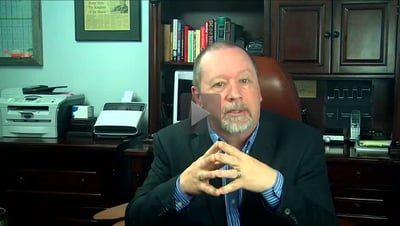Safety People Love To Argue
Shooting down one person’s imperfect safety ideas in favor of your own imperfect safety ideas still yield the same results: good people getting hurt.
 If only social media were treated like safety conferences, or social events, or wine-and-cheese gatherings. People would be considerate of others’ points-of-view. They would listen, consider and digest ideas. They would ask questions. They would be respectful and be willing to accept that perhaps, among all of these diverse minds and experiences, they might get a new perspective that challenges their own.
If only social media were treated like safety conferences, or social events, or wine-and-cheese gatherings. People would be considerate of others’ points-of-view. They would listen, consider and digest ideas. They would ask questions. They would be respectful and be willing to accept that perhaps, among all of these diverse minds and experiences, they might get a new perspective that challenges their own.
But, it’s social media. Social media is apparently where points-of-view are defended, where others’ opinions are chastised - sometimes, even ridiculed. You’ve seen people offer their opinion to headlines without actually reading the entire article. That would never happen at a party or social event. There, people would be given consideration to finish explaining their idea. People would engage, listen, hear, exchange and probably learn something.
Defending An Imperfect Idea
But you can’t learn if you’re defending your point of view. If safety meetings were conducted in the same way as social media, attendees would interrupt the meeting with “a thousand reasons why that won’t work.” But it doesn’t happen because you can see my face and I can see yours. When we're face to face, there's respect. It’s easier to argue when your face can’t be seen.
While you are arguing, you are not considering another point of view. You are defending your own. Shooting down one person’s imperfect safety ideas in favor of your own imperfect safety ideas still yield the same results: good people getting hurt.
So instead of poo-pooing an idea or arguing with one tiny part of an overall safety philosophy, how about we dial it back a bit and simply do what we expect our employees to do when we speak: listen?
Good People Still Getting Hurt
Never before in history have there been better workplace safety processes and procedures. Never before in history have there been more certified safety professionals in the field. So, why are the incident numbers still rising? Good people shouldn’t still be getting hurt.
What if the rule was: if you’ve achieved Zero for a long time, then you get to dominate the discussions. Meanwhile, there might be another idea out there worth considering.
If front-line employees displayed the same conduct as some safety people do on-line, nothing would ever change. No new initiatives would be accepted. No new processes would ever be considered. If safety people publicly chastised their own employees the way they handle social media discussions, the safety cultures of those companies would plummet. Publicly chastising an employee is what terrible managers do. Good managers pull an employee aside and have a private discussion. Private discussions are available on social media channels too.
How You Do One Thing Is How You Do Everything
 The interesting thing is that you may work for a private company, but you have a public profile. People, including potential employers and clients, can see what you’ve written. How you handle a Blogger is a pretty glaring example of how you handle employees or customers. Having strong opinions is one thing. Being inconsiderate is quite another.
The interesting thing is that you may work for a private company, but you have a public profile. People, including potential employers and clients, can see what you’ve written. How you handle a Blogger is a pretty glaring example of how you handle employees or customers. Having strong opinions is one thing. Being inconsiderate is quite another.
Everyone has the right to argue. You do not have the right, however, to be insulting and demeaning. It’s safety.
How about we do it this way: you have right to tell others they are wrong when you are at Zero. Until then, it is all unproven. But it gets better when we work together, not tear each other down.
Kevin Burns is a management consultant, safety speaker and author of "The Perfect Safety Meeting." He is an expert in how to get through to people - how to talk with them so they hear and understand. Kevin's presentation "Trust The Process - Instill A Safety Attitude To Build An Engaged Culture Of Safety" will help your organization reach the following goals: better engagement and buy-in to safety, increased teamwork, better communication, lower turnover resulting in increased profits from production. Click here for more information and to discuss your needs with Kevin.


